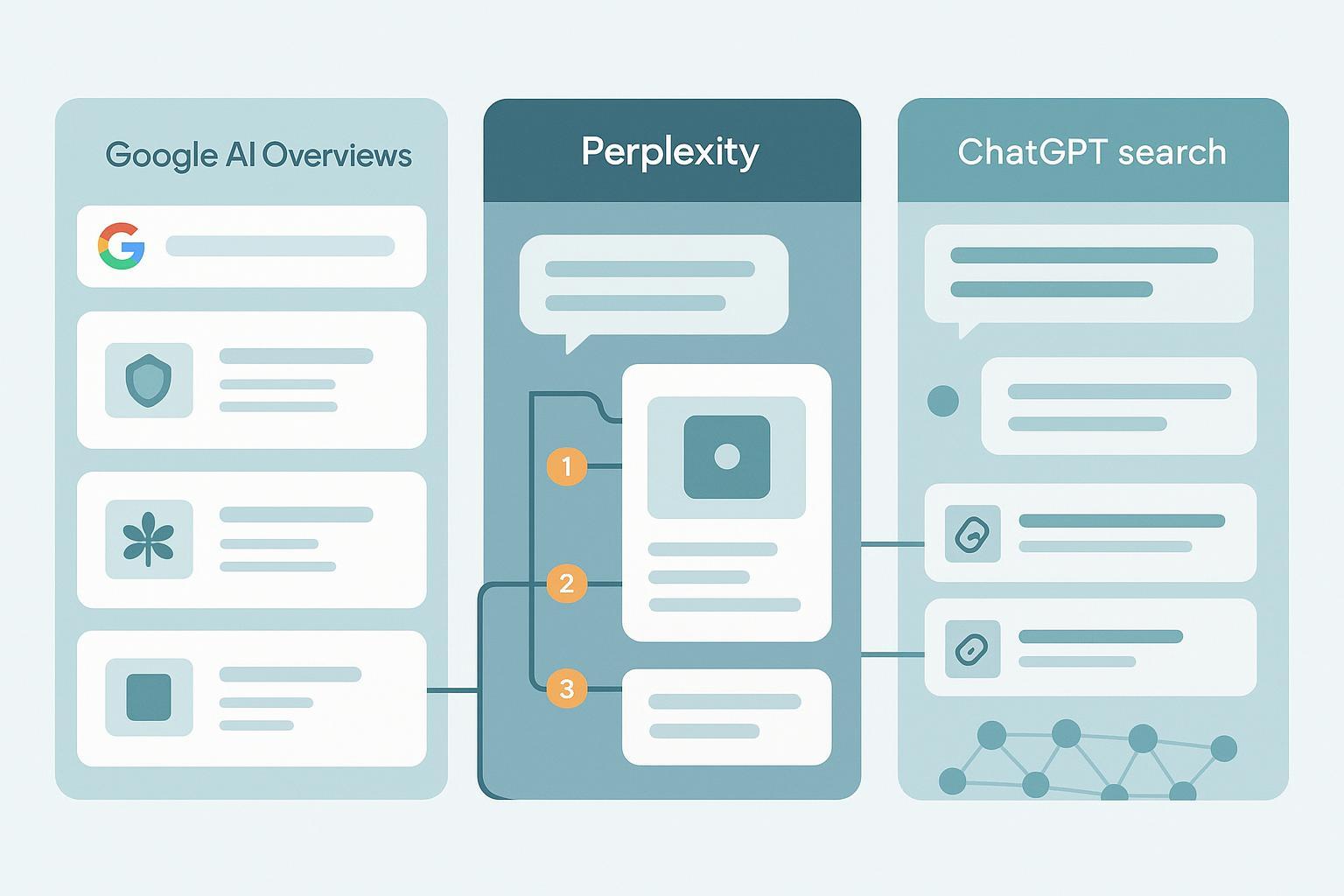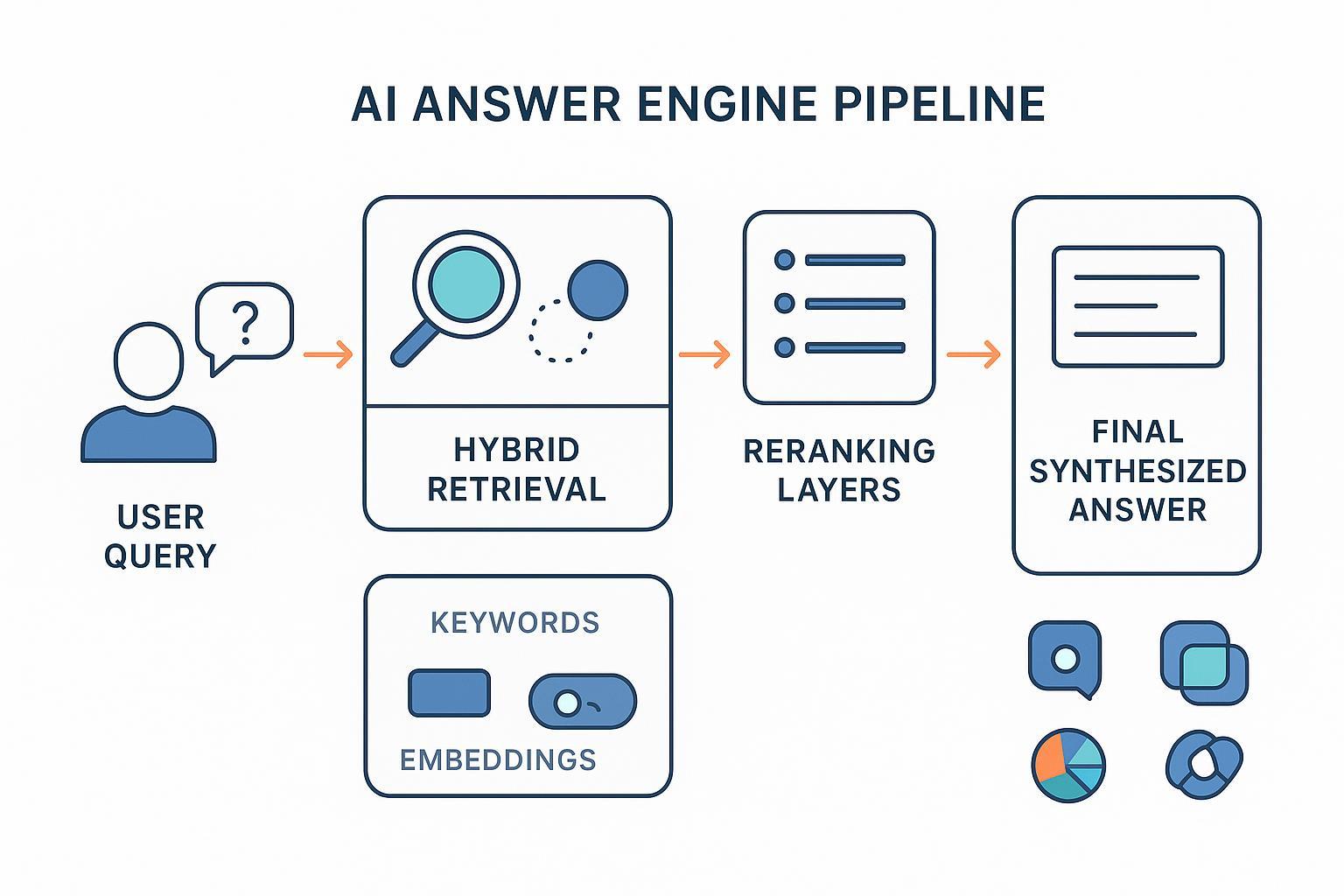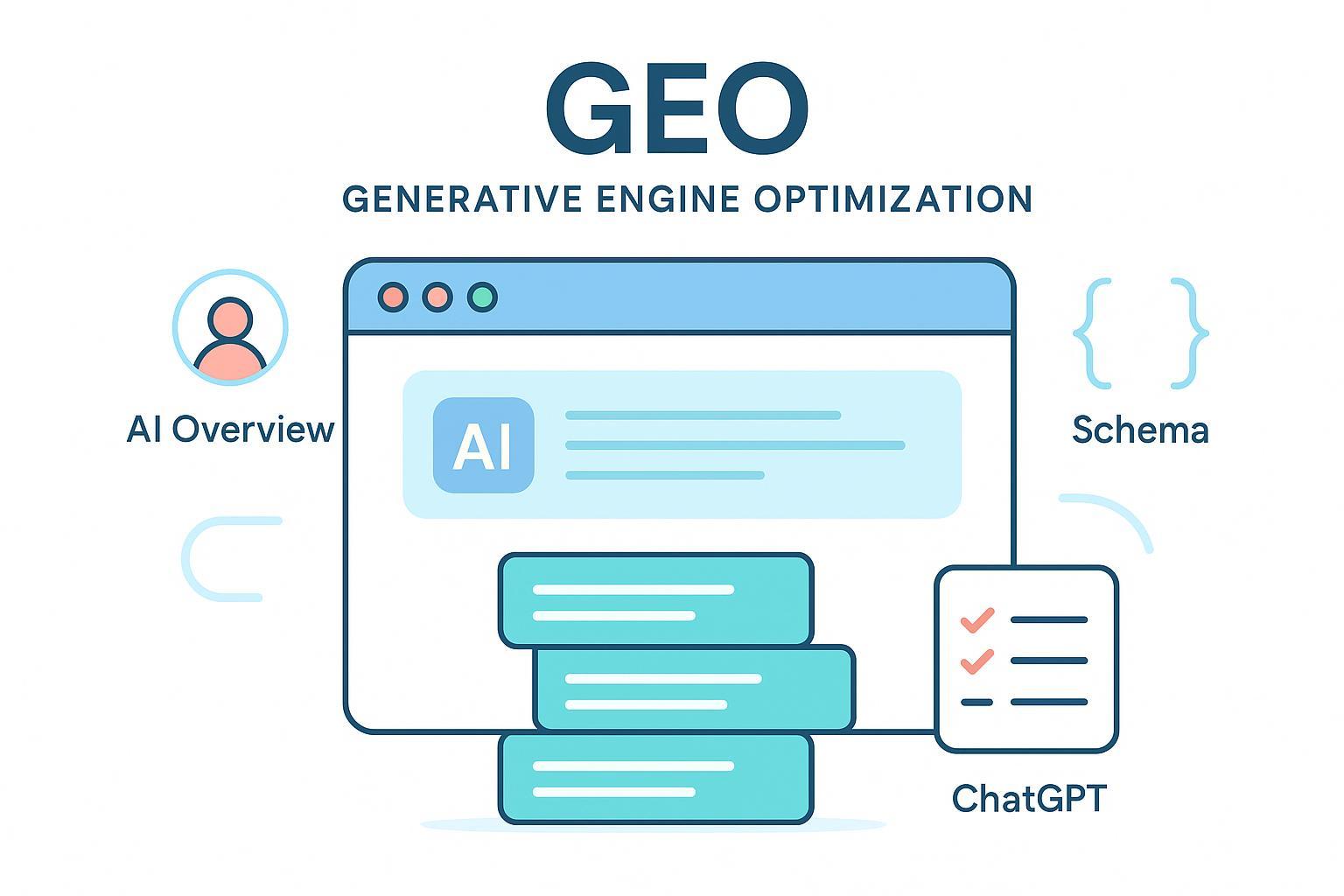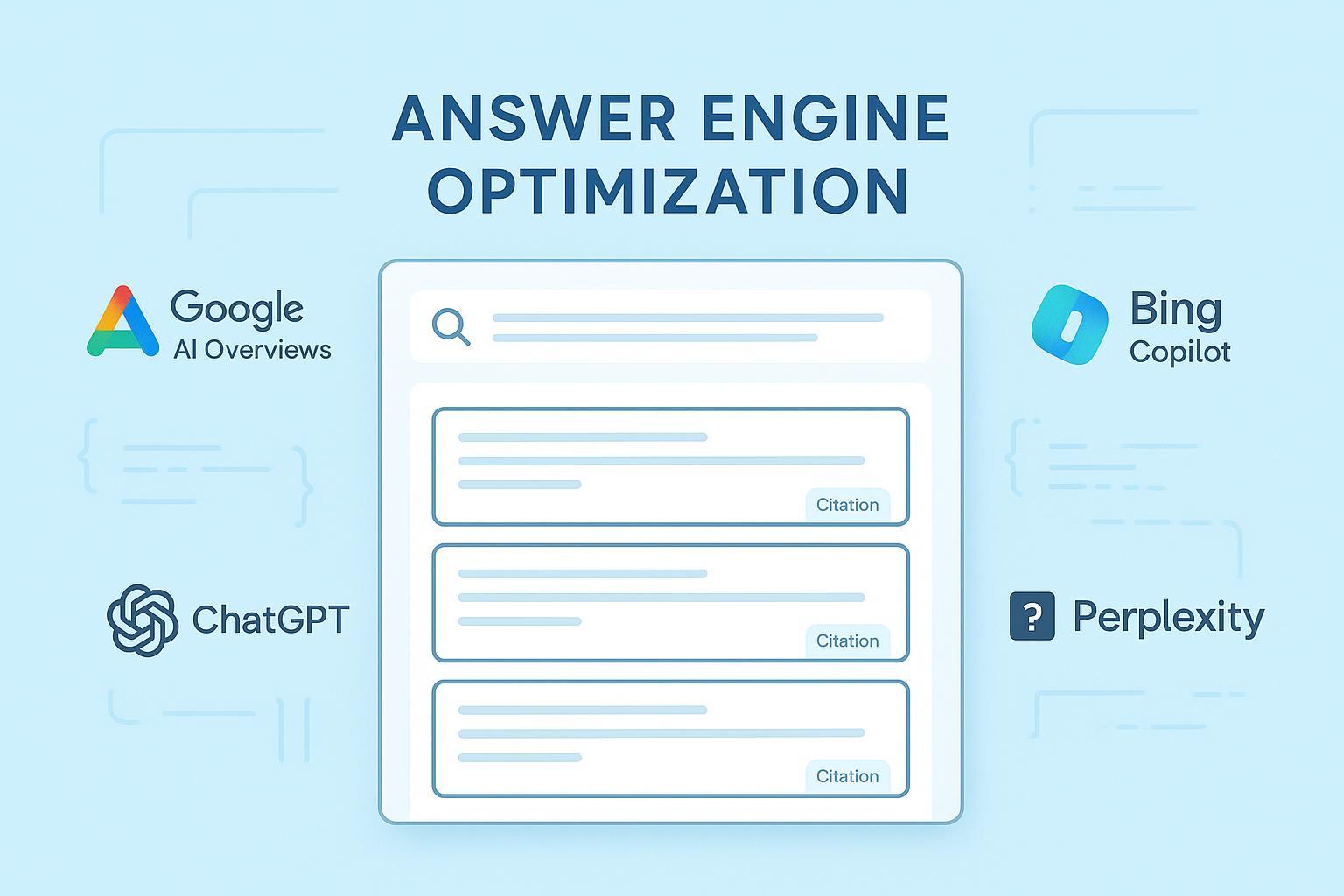Answer Engine Optimization (AEO): Beyond SEO in 2025
Learn what Answer Engine Optimization (AEO) means in 2025, how it differs from SEO, and why optimizing for AI answer engines is vital for marketers.

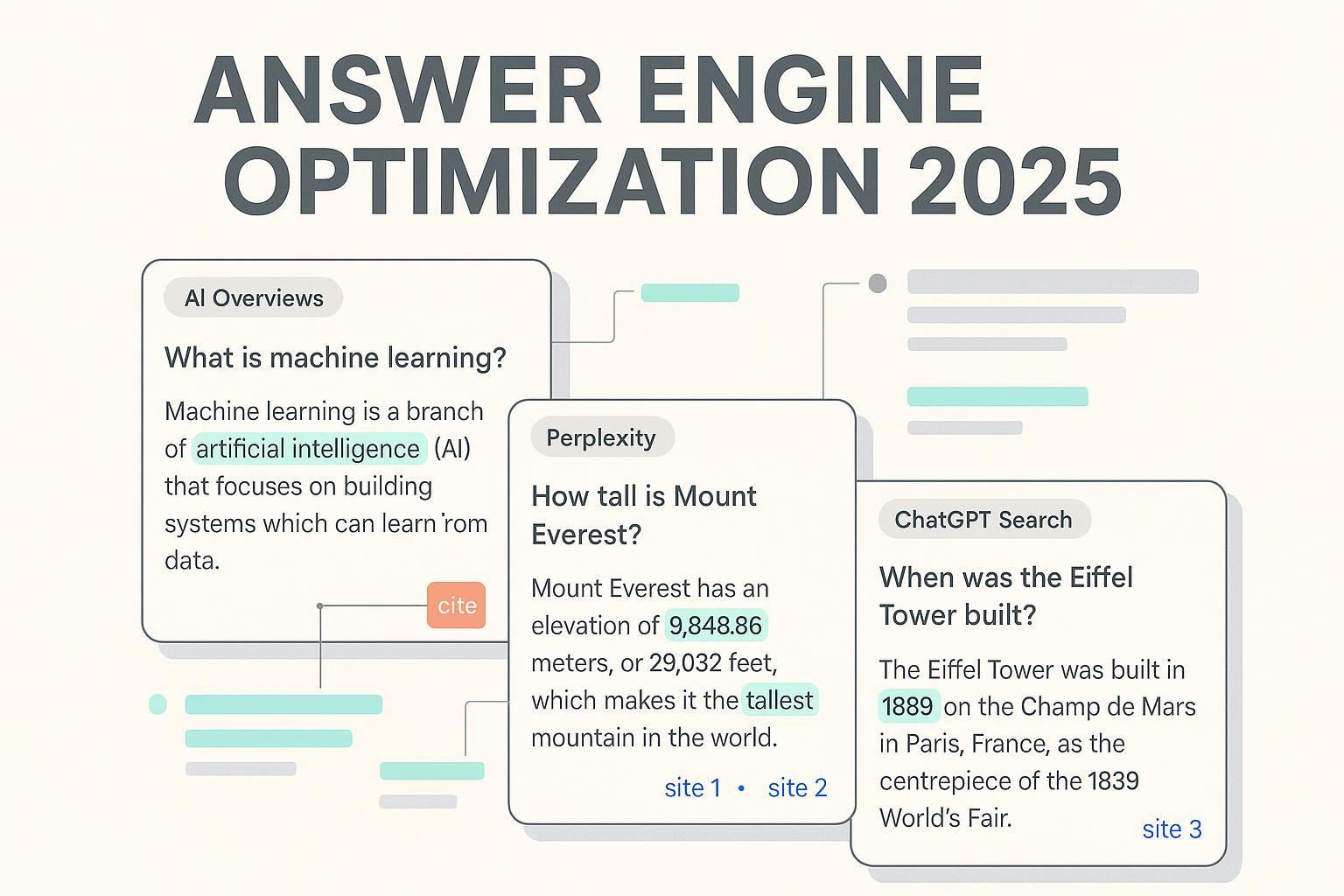
Answer Engine Optimization (AEO) is the practice of structuring, sourcing, and presenting content so AI-powered answer engines—like Google’s AI Overviews/AI Mode, Perplexity, and ChatGPT Search—can accurately discover, interpret, and cite it inside the answers they generate. In plain terms: instead of only chasing ranked blue links, AEO focuses on being referenced within the answer itself.
AEO does not replace SEO fundamentals. Crawlability, fast performance, topical authority, and editorial quality remain prerequisites. It’s also not just “featured snippet optimization.” Modern engines synthesize across multiple sources and sub-questions.
Why AEO matters now
In 2025, AI-generated answers increasingly accompany or replace classic SERPs. Google describes AI features that surface synthesized summaries with visible source links and broader link diversity compared with traditional results, emphasizing helpful, verifiable content. See Google’s guidance in the AI features and your website — Google Search Central (2025) and its emphasis on helpful content in the Top ways to ensure your content performs well in AI search — Google Search Central blog (2025).
Perplexity frames itself as an AI search engine that provides answers with clickable citations for verification, as outlined in the Getting started with Perplexity guide (2024). OpenAI’s Introducing ChatGPT search announcement (Oct 2024, updated 2025) states the product highlights and attributes information from trustworthy sources, including links in a Sources panel.
AEO vs. SEO (and where GEO fits)
- Objective
- Optimization focus
- SEO: keyword-targeted pages, backlinks, technical performance.
- AEO/GEO: entity-first clarity, passage-level Q&A, credible sourcing and citations, freshness; content designed for AI comprehension and passage reuse. For deeper context, see What is generative engine optimization (GEO)? — Search Engine Land, 2024 and SEO vs. GEO — Search Engine Land, 2025.
- Measurement
- SEO: rankings, organic clicks, CTR, conversions.
- AEO/GEO: inclusion rate in AI answers, citation frequency/quality, AI share of voice, AI-driven referrals, and sentiment/accuracy of mentions.
How answer engines find and cite content
- Google AI Overviews/AI Mode
- Presents synthesized answers with inline links and aims to expose a broader set of sources than classic results. See Google’s product notes in AI in Search: Going beyond information to intelligence — blog.google, 2025.
- Perplexity
- Delivers answers with “clickable citations” for verification; detailed selection logic isn’t publicly documented. See the Getting started with Perplexity guide (2024).
- ChatGPT Search
- Highlights and attributes information from trustworthy sources, with links and a Sources panel. See Introducing ChatGPT search — OpenAI (Oct 2024, updated 2025).
Practical AEO tactics you can apply today
- Lead with clear, concise answers
- Write question→answer passages at the top of relevant sections. Follow with layered explanations and cite primary sources near specific facts or claims.
- Think in chunks and passages
- Structure content into self-contained, retrievable blocks that address sub-questions. This helps answer engines pull precise passages—what some practitioners call “micro AEO wins.” See discussion of chunks/passages in Answer engine optimization: 6 AI models you should watch — Search Engine Land, 2025.
- Model entities and relationships
- Use clear entity names (people, organizations, products, concepts) and describe relationships explicitly. This supports machine interpretability and knowledge graph alignment.
- Maintain citation hygiene
- Prefer primary sources; include years and context near stats; avoid unsupported claims. Prominent bylines, dates, and update notes reinforce trust.
- Use semantic and structured markup where appropriate
- Semantic HTML and schema (e.g., FAQPage, HowTo) clarify intent and structure. While not a guarantee for AI inclusion, they aid parsing and support classic SEO. See AI features and your website — Google Search Central, 2025.
- Keep it fresh and technically sound
- Update fast-moving topics; ensure fast load, clean internal linking, and crawlability. Fundamentals still matter; review the SEO Starter Guide — Google Search Central.
Measuring AEO: a practical playbook
- Inclusion and citations
- Track how often your pages appear as cited sources across engines and themes.
- AI share of voice
- Compare your citations vs competitors in AI answers to gauge relative visibility.
- Prompt coverage
- Maintain a library of core user questions; test regularly in target engines to observe inclusion patterns.
- AI-driven referrals
- Annotate analytics for observed AI citations and evaluate downstream engagement.
- Sentiment and accuracy
- Log whether mentions are neutral/positive/negative and verify factual correctness.
- Cadence
- Monthly inclusion and sentiment roll-ups; quarterly strategy adjustments based on trends.
Practical example: monitoring a new Q&A passage
Scenario: You publish a concise Q&A block answering “What is [Topic]?” at the top of a page, with a dated claim and primary citation.
- Week 0
- List 10–15 core user questions. Publish answers as short passages with inline, descriptive source anchors.
- Week 1
- Test those questions in Google AI Overviews/AI Mode, Perplexity, and ChatGPT Search. Note whether your page is cited and how the engine attributes the claim.
- Weeks 2–4
- Iterate the page: clarify definitions, add corroborating citations, refine headings and schema. Re-test weekly and log changes.
You can centralize this monitoring in a single workspace with Geneo to track citations across engines and maintain historical logs. Disclosure: Geneo is our product.
For complementary tactics on earning citations in communities frequently surfaced by AI engines, see this practical guide on driving AI search citations through Reddit communities.
Risks and mitigation
- Hallucinations and misinformation
- Instances of inaccurate AI Overviews have been publicly acknowledged; Google described improvements and cautioned users about viral screenshots in a May 2024 update (see AI Overviews: About last week — blog.google, 2024). Mitigate by grounding claims in primary sources, adding dates, and offering correction paths.
- Overfitting to proprietary signals
- Treat tactics as heuristics. Engines evolve quickly; avoid rigid checklists.
- Compliance and privacy
- Maintain responsible AI use and avoid PII exposure; align with institutional guidelines like the Government of Canada’s 2025 guide on generative AI use.
Quick start checklist
- Define 20–30 priority user questions per topic.
- Create question→answer passages with inline citations near facts.
- Chunk content into scannable, retrievable blocks; clarify entities.
- Add semantic HTML and relevant schema; ensure technical health.
- Test in AI Overviews/AI Mode, Perplexity, and ChatGPT Search biweekly.
- Log inclusion, citations, sentiment, and accuracy; iterate monthly.
The bottom line
AEO is the natural evolution of organic visibility in an AI-first discovery landscape. In 2025, the goal is not only to win ranked listings—it’s to be quoted, cited, and trusted inside the answers users read. Keep fundamentals tight, design content for passage-level reuse, and measure inclusion over time. The brands that adapt their content and monitoring to this reality will understand—and steadily improve—their visibility within AI-generated answers.


